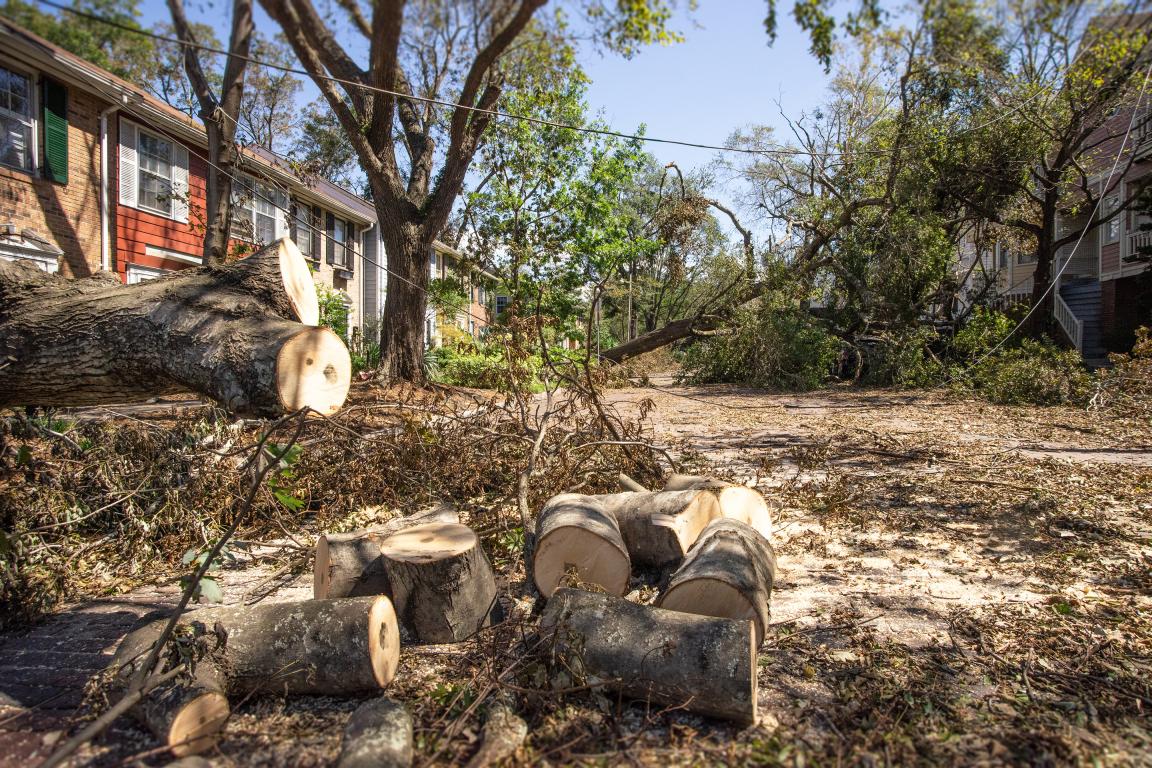Storm Clean-Up Safety Guide

Cleaning up after storms and floods can be dangerous.
Whether you're a worker, volunteer or resident, this guide shares:
Dangers to Watch For
- Carbon monoxide from generators, power tools or pressure washers
- Drowning from walking or driving through floodwaters
- Injuries from debris, sharp objects or unstable buildings
- Electrical hazards, including live wires and generator backfeed
- Contaminated floodwater or standing water
- Heavy machinery accidents
- Heat exhaustion and sunburn
- Vehicle accidents
- Animal bites and stings
- Toxic building materials like lead, asbestos and mold
Safety Tips
For Everyone
- Stay informed. Listen to local officials for warnings and safety updates.
- Check your surroundings. Look for hazards before you start working.
- Keep children and pets away until clean-up is done.
- Avoid floodwaters. They may be deep, fast-moving or contaminated.
- Handle debris with care. Use tools and protective gear to prevent cuts or exposure.
- Wear protective clothing. Rubber boots, gloves, goggles and waterproof gear help protect against dirty water and soil. Wear an N95 mask for demolition or dusty work.
- Stay hydrated. Bring safe drinking water if none is available on site.
- Use safe water only. Follow local guidance for drinking, cooking and cleaning. Use bottled, boiled or treated water.
- Eat safe food. When in doubt, throw it out.
- Avoid downed power lines. Never touch them.
- Wash hands often. Always wash before eating, drinking or smoking.
- Use tools safely. Don’t run chainsaws or power tools in wet areas. Always follow instructions.
- Prevent carbon monoxide poisoning. Only use gas-powered equipment outdoors or in well-ventilated spaces.
- Protect against sun and insects. Keep sunscreen, insect repellent and lip balm handy.
- Get medical help fast if you are injured or feel sick.
- Know your limits. You may need a licensed professional and permits. Check your local rules.
For Supervisors and Volunteer Leaders
If you’re leading a group of workers or volunteers:
- Assign one person to be in charge.
- Match tasks to each worker’s skills.
- Set clear rules for safety and protective equipment. Decide who provides the gear.
- Make sure everyone is up to date on tetanus shots.
- Hold a safety briefing before work begins.
- Collect emergency contact info from all workers.
- Do headcounts before leaving, on arrival and at the end of the day.
- Check in regularly with workers to make sure they’re safe.
Helpful Resources
Tab/Accordion Items
- NCDHHS: Disaster Recovery Health and Safety
- CDC: Natural Disasters and Severe Weather
- NIOSH: Responding to Natural Disasters and Extreme Weather
- AIHA: Health and Safety Issues in Natural Disasters
- FEMA: The ABCs of Returning to Flooded Buildings
- FEMA: Initial Restoration for Flooded Buildings
- NIEHS: Hurricanes and Floods Recovery Worker Training Resources
- OSHA: Hazard Exposure and Risk Assessment Matrix for Recovery Work
Prevent Mold
- Return home only when told it’s safe. Clean and dry your home quickly.
- “When in doubt, throw it out.” Remove wet porous items (like carpet, drywall) if they’ve been wet over 48 hours.
- Clean hard surfaces with hot water and detergent.
- Throw away items that can’t be cleaned, like furniture.
- Wash contaminated clothes separately.
Safety Tips
- People with weak immune systems (like those on cancer treatment, transplant patients or people taking immune-suppressing medicine) should not clean mold.
- Children under 12 should not enter mold-damaged buildings.
More information:
On This Page Jump Links
Off
